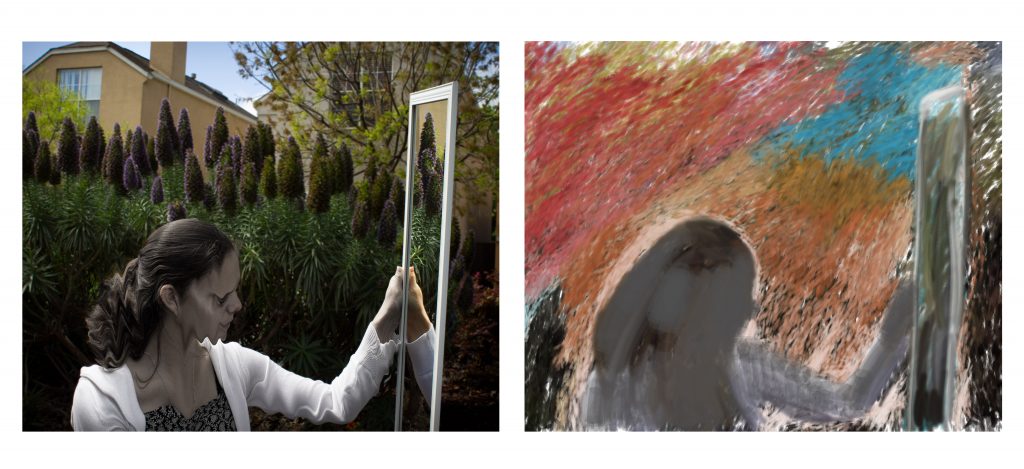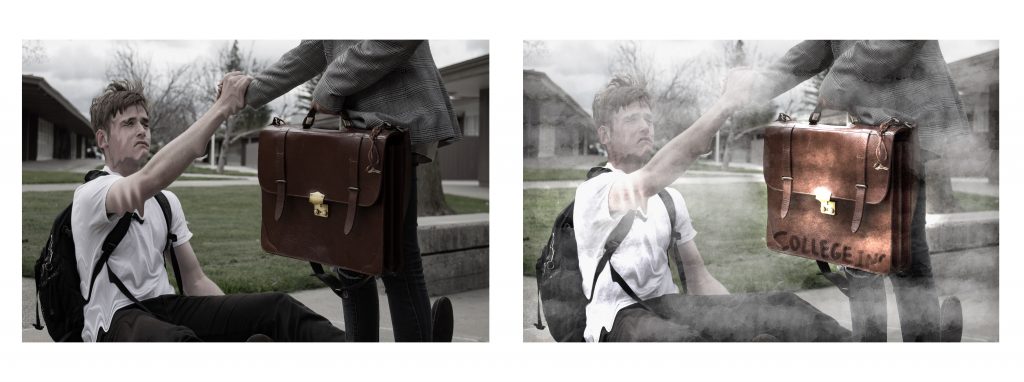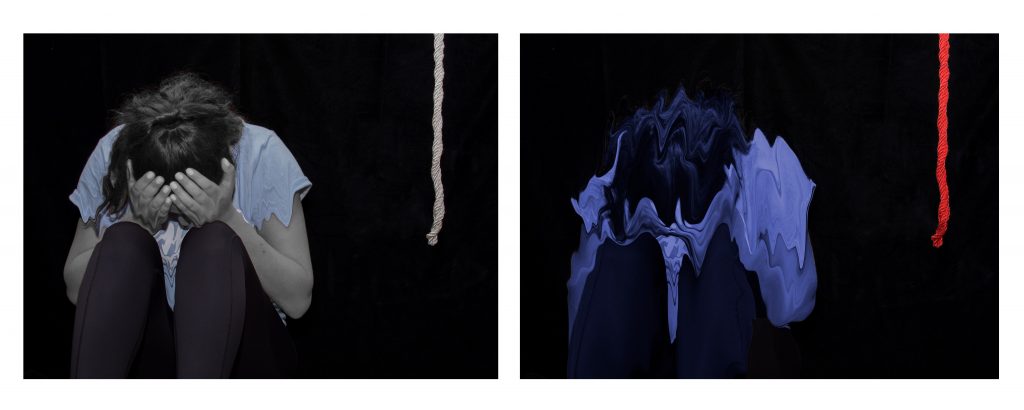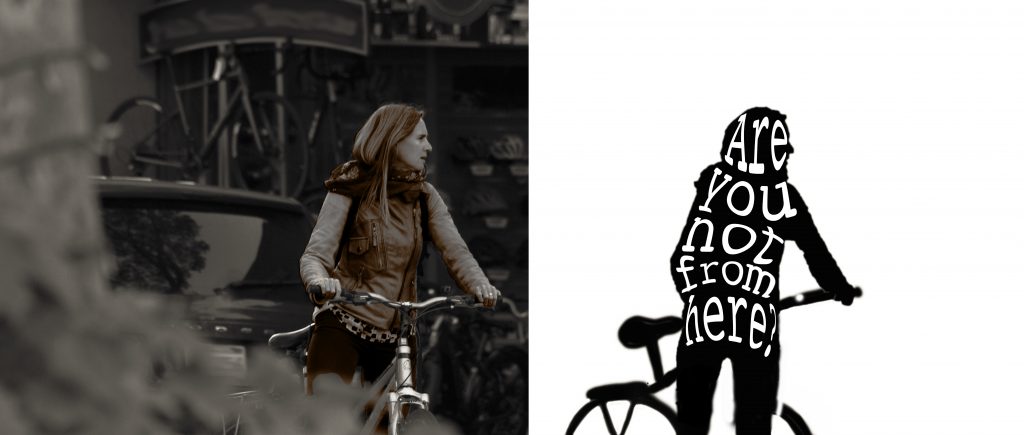Welcome!
Cover Letter
My name is Tanshi Mohan, and I am a Design student at Freestyle Academy. During my time at Freestyle, I have explored my passion for photography, and I have worked to improve my writing, digital literacy, and collaborative skills. In my spare time, I play piano, work at Tin Pot Creamery, and run an environmental justice club.
For my Senior Showcase, I am proud to present my Zenith and Citizen projects, both of which have been created this year. My Zenith project is a continuation of my passion for psychology, which I plan to study over the next four years. I created two diptychs and triptychs that focused on subject photography and learned how to edit photographs to make them look surreal in Photoshop. For the Citizen Project, we were pushed out of our comfort zone to go shoot street photography and to learn how to capture candid emotions. While the public-discomfort was hard to handle, what was most difficult was framing a meaningful shot in the moment. I learned how to get comfortable behind a camera as well as work quickly. I felt like both of these projects took my basic photography skills to the next level. Before, I would shoot normal portrait photography for friends and their Instagrams. Now, I am doing more than creating a “pretty picture” by instead forging a message and trying my hand in fine art photography.
I would love to have feedback on my technical editing skills in both these projects as well as how well either project gets their message across. Do you feel like a different color would have better represented the mood of my Citizen photograph? Was my Zenith too abstract, or, with a little explanation, is it easy to “get the picture”? If I were to re-do these projects, what should I do differently?
Next year I will be attending Chapman University as a Psychology major. I am currently unsure of what my minor will be, but some of my interests include political science, advertising/marketing, and (as mentioned above) photography.
Feel free to contact me at @tanshim@freestyleacademy.rocks.
Zenith
Zenith is a synthesis of all of our skills learned at Freestyle Academy composed into a project of our choice. My Zenith Project uses photography and digital art to depict the obstacles college student’s face in regards to today’s mental health practices. My editing process was inspired by surrealism photography. My three concepts are based on my research paper. The first one represents the stigmatization and fear of medicine for mental health illnesses, the second one represents the lack of support that colleges give their students during mental health rough patches, and the last one represents the way we handle mental illnesses-how most people feel as though we can only get help when the illness gets to or near a crisis stage. My last piece is a triptych that embodies the feelings of anxiety, depression, and bipolar disorder through a workplace setting. For my project, I used Photoshop and Corel Painter.

For the first diptych titled, “Zombie”, I used the Liquify tool in Photoshop on the left-hand side to create the “melting effect” on the person to make her look more like a “zombie”, one of the stigmas attached to the medicine used to treat mental illnesses. People fear that they will lose their thoughts and personality, rendering them a zombie. I “painted” (in Corel Painter) the silhouette and the colors around my subject on the right side to emphasize the feelings of being a void (dark, grey silhouette) and the colors around her to represent how the outside world sees her. The vibrant colors represent happiness and normality.

My second diptych titled, “College First”, represents the common trend of how colleges treat students with mental illnesses. They protect their reputation, status, and liability first, as we see in my research paper with the common trend of forcing students to take mandatory leaves of absence. Again, the subject who has “fallen” on the ground is “melting” to emphasize distress and a whatever rough patch the student may be going through. College is represented by the briefcase and the person in a blazer helping the subject up. I chose to focus on the blazer and briefcase instead of including the whole person because I wanted to represent college as an institution, not a face. Everything in the photo on the right is faded except for the briefcase to show how in the end, colleges have put their “needs” first.

For my third diptych titled, “Pull for Help”, I used a velvet-black backdrop to emphasize the feeling of being in a dark place, a feeling most correlated with major depressive disorder. The rope on the right of my subject is to represent help, and how it is always there if you reach out for it. My subject does not acknowledge the rope because of the way we treat mental illnesses, only focusing on “crisis-management” rather than prevention. Even though my subject looks depressed, the symptoms of mental illnesses are not always clearly physical, so to emphasize the distress, depressed moods, and other symptoms, I used a Hue/Saturation edit and the Liquify tool, as seen on the right side of the diptych. The rope is red to emphasize the emergency of the situation, and how my subject should reach out for help before it is too late.

These images are conceptual photographs of what the 3 most common mental disorders look like. In the first image, the vivid, almost chaotic placement of the colors represent anxiety, a disorder characterized by enduring amounts of distress and anxiety. Anxiety feels overwhelming, much like the person’s computer screen. The next image represents depression, which is categorized as a mood disorder with symptoms of fatigue, hopelessness, lack of motivation, and sadness for a period of 2 weeks or more. In this picture, no one is at the screen because sometimes depression makes it hard for people to leave their houses, let alone get out of bed. Lastly, the image of the colorful man in front of the computer screen represents bipolar disorder, a mood disorder characterized by alternating states of depression and mania. This is the stage of mania, as we can see with the bright colors that represent a hyperactive and optimistic state. If we look at the right lower corner of the computer screen, we can also see that this person is working at 12:30 a.m.
Zenith Reflection
My Zenith project challenged me to create and edit pictures in a different way. Before this project, I mainly took “basic” pictures, ones that were spontaneous and for peoples’ Instagrams. Like I said in the cover letter, this time I was working with conceptual photography, which required structure and orchestrated shots. During this project, I learned how to use the Liquify tool, make better selections, and explored a lot more in Photoshop. I even learned a little bit about brushes and layering in Corel Painter. One thing I wish I did differently is to have had a more interesting picture for the middle photo in the triptych as well as used Corel Painter for more of the diptychs. If I did this, my project would have met more of my expectations. But, Corel Painter is hard to use with abstract or conceptual thoughts. Next time, I will have to think of specific uses for the application.
I hope my Zenith spreads awareness about what needs to change in our mental health system in America. I hope people know that it’s never too late or too early to reach out for help. And I hope that colleges and society as a whole start to take more preventative measures towards ensuring good mental health.
Citizen
Our Citizen Unit started in English, where we read the book “Citizen: An American Lyric” by Claudia Rankine, a book that uses poetry, research, and essay-style writing to talk about the everyday racism that African-Americans face in America. Through this book we learned about aspects such as microaggressions, which are “everyday verbal, nonverbal, and environmental slights, snubs, or insults, whether intentional or unintentional, which communicate …derogatory, or negative messages to target persons based solely upon their marginalized group membership”, as well as learned about invisibility and hyper-visibility problems. In response, we were asked to interview someone else’s identity and how they may face one of these problems. I decided to interview a young Swedish woman who talked about her invisibility issue. More specifically, she explained how she is always stereotyped and pre-judged as an American “white-girl” and how her own culture is continuously eclipsed by these pre-judgments. I based my diptych off of my lyrical essay about her.
If you would like to read my lyrical essay that the photo is based off, click the link here.

My photograph is framed by shrubbery and a tree. This is to give the feeling of being unnoticed or unimportant, much like how my interviewee feels when she tries to celebrate, talk about, or express her own culture. Similarly, the subject in my photograph feels and looks more hidden. Out of the hundreds I took, I decided to choose this photograph because of the woman’s expression. She looks as if she is searching, much like my interviewee is trying to search for herself while being caught in between two distinct identities. I chose to juxtapose the quote next to her image so the viewer looks twice; my subject does look like the stereotypical American. Asking “Are you not from here” starts to probe the viewer’s preconceptions about her. The font used on the right side is Courier, which is not a distinctive font to emphasize the point of my interviewee’s feeling of being hidden.
Citizen Reflection
This was my first time doing street photography, a diptych, and learning how to use Split-Toning on Photoshop. On top of the technical challenges, street photography was a challenge in itself, because we had to get comfortable behind the camera while making everyone else around us uncomfortable. As mentioned in my letter, it was very difficult creating framing and capturing the specific moment. After this project, I learned that I really like street photography and I would love to do it again. Capturing candid moments is like a glimpse into someone else’s life. I also think street photography will help me down my path of being an activist as media coverage of events like marches and protests really need to capture the moment, feeling, and importance.